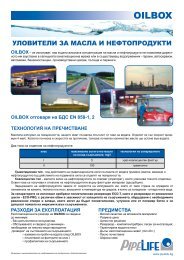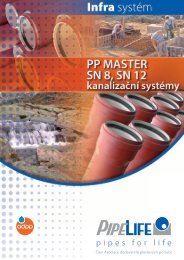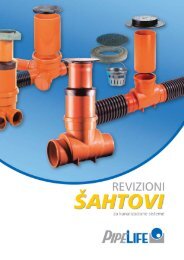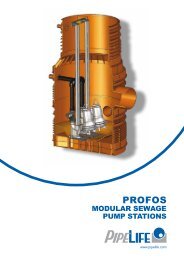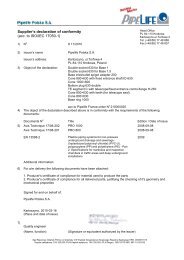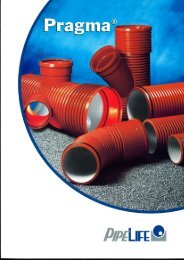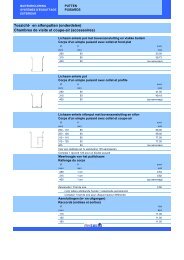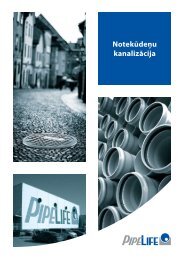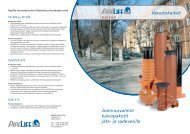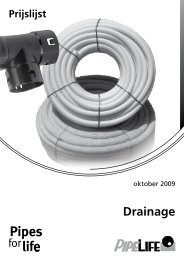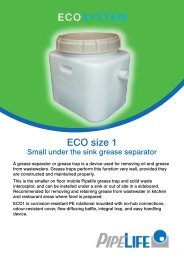PE Pipe Technical Catalogue (PDF) - Pipelife Norge AS
PE Pipe Technical Catalogue (PDF) - Pipelife Norge AS
PE Pipe Technical Catalogue (PDF) - Pipelife Norge AS
You also want an ePaper? Increase the reach of your titles
YUMPU automatically turns print PDFs into web optimized ePapers that Google loves.
<strong>Pipe</strong>life <strong>Norge</strong> <strong>AS</strong><strong>PE</strong> CATALOGUE-SUBMARINE APPLICATIONS, PI<strong>PE</strong>LIFE NORGE <strong>AS</strong>, December 2002.A.4 Design of loading by concrete weightsSubmarine pipelines of <strong>PE</strong> material will float due to buoyancy if they are not loaded by concreteweights, since the specific gravity of <strong>PE</strong> material is less than the surrounding water.The purpose of the weights is also to provide stability against :−−−Air and gas accumulation (although preferably this is not “solved” by weights)Current forcesWave forcesA.4.1Degree of loadingDependent of the project’s technical specifications, we have to calculate the amount of loading.This degree of loading is often related to the pipe’s displacement :adw cw= ⋅100%A.4.1)2Dπ ⋅ ⋅ γ w4w cw = weight of concrete weights in water distributed pr. m pipeD = outside diameterγ W = specific gravity of surrounding waterAnother way to describe the degree of loading is to compare it to the buoyancy of internal volume ofthe pipe. This is called the air fill rate, and is nearly always used in Norway to describe the degree ofloading:aaw cw + w pipe w= ⋅100%A.4.2)2dπ ⋅ ⋅ γ w4w pipe w = weight of pipeline in water (negative)d = inside diameterThe degree of air filling tells us which degree of the internal pipe volume has to be filled with air tomake the pipe buoyant. This definition also includes the weight of the pipe. We have to underlinethat an air fill rate of for instance 30% doesn’t mean that we expect 30% of the internal volumeto be filled with air during operation, but is simply a practical way to describe the degree ofloading.The difference between a d and a a is not so big. Fig. A.4.1 on next page gives an indication based onthe assumptions :ρ <strong>PE</strong> = 950 kg/m 3 (density <strong>PE</strong>)ρ C = 2400 kg/m 3 (density concrete)ρ w,sea = 1025 kg/m 3 (density sea water)ρ w = 1000 kg/m 3 (density fresh water)Side 48 av 84



